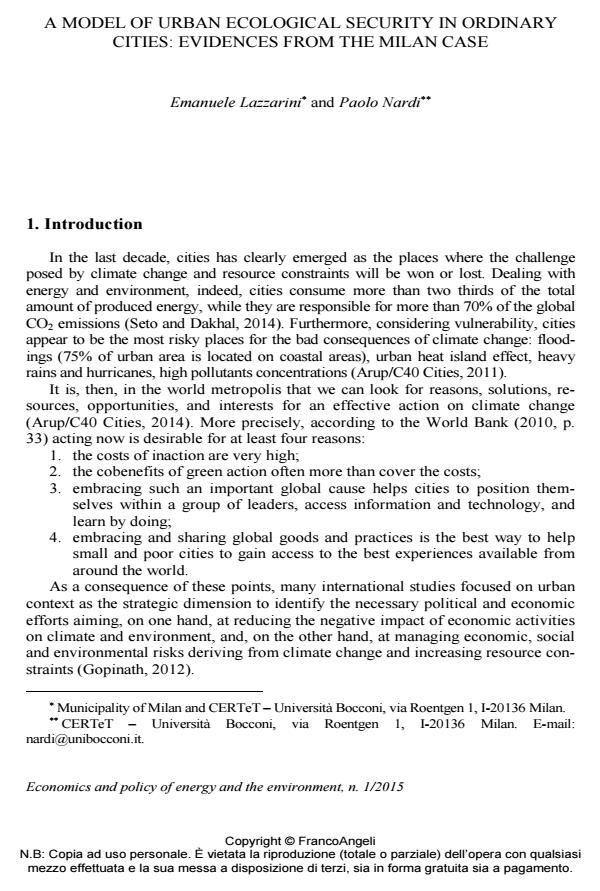A model of urban ecological security in ordinary cities: evidences from the Milan case
Titolo Rivista ECONOMICS AND POLICY OF ENERGY AND THE ENVIRONMENT
Autori/Curatori Emanuele Lazzarini, Paolo Nardi
Anno di pubblicazione 2016 Fascicolo 2015/1
Lingua Inglese Numero pagine 13 P. 29-41 Dimensione file 177 KB
DOI 10.3280/EFE2015-001003
Il DOI è il codice a barre della proprietà intellettuale: per saperne di più
clicca qui
Qui sotto puoi vedere in anteprima la prima pagina di questo articolo.
Se questo articolo ti interessa, lo puoi acquistare (e scaricare in formato pdf) seguendo le facili indicazioni per acquistare il download credit. Acquista Download Credits per scaricare questo Articolo in formato PDF

FrancoAngeli è membro della Publishers International Linking Association, Inc (PILA)associazione indipendente e non profit per facilitare (attraverso i servizi tecnologici implementati da CrossRef.org) l’accesso degli studiosi ai contenuti digitali nelle pubblicazioni professionali e scientifiche
In the last decade, cities has clearly emerged as the places where the challenge posed by climate change and constraints on energy and environmental resources will be won or lost. According to Hodson and Marvin (2009), world cities tend to conform their visions, strategies and policies around a common paradigm of environmental security and sustainability, named "Secure Urbanism and Resilient Infrastructure" (SURI), based on the strategic protection of cities, a new autarky and the development of global urban agglomerations. What about ordinary cities? This case study on Milan offers a very interesting test field to provide how the SURI model does not fit ordinary cities. Results show that Milan still lacks of a recognized and legitimized subject, capable of coordinating a process of urban visioning and narrative building; at the same time an alternative paradigm emerges, based on bottom-up initiatives.
Parole chiave:Urban ecological security, climate change, ordinary city
Jel codes:Q20, Q54, R00
- Coupling fuzzy multiple attribute decision-making with analytic hierarchy process to evaluate urban ecological security: A case study of Guangzhou, China P.P. Gao, Y.P. Li, J. Sun, H.W. Li, in Ecological Complexity /2018 pp.23
DOI: 10.1016/j.ecocom.2018.03.001
Emanuele Lazzarini, Paolo Nardi, A model of urban ecological security in ordinary cities: evidences from the Milan case in "ECONOMICS AND POLICY OF ENERGY AND THE ENVIRONMENT" 1/2015, pp 29-41, DOI: 10.3280/EFE2015-001003